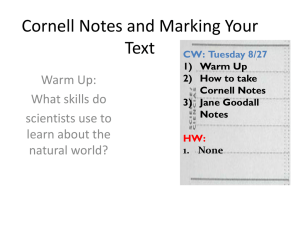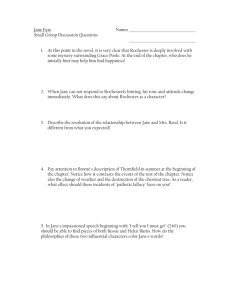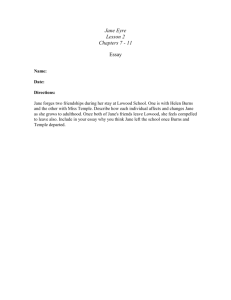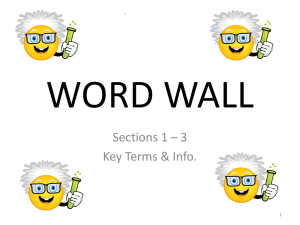Jane Goodall intorduction to science inquiry ppt
advertisement
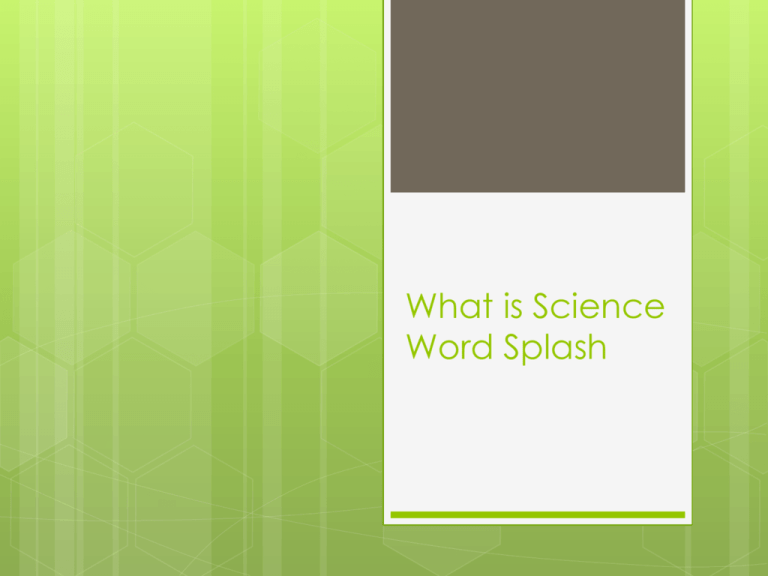
What is Science Word Splash LT: We are learning the skills and attitudes of a scientist. The purpose is to apply these skills to our own scientific experiences. Today we will learn 7 scientific skills and 4 attitudes of a scientist. Warm up: What skills do scientists use to learn about the natural world? CW: Show completed slow flyer lab, Jane Goodall, vocab HW: Complete class work LT: We are learning the skills and attitudes of a scientist. The purpose is to apply these skills to our own scientific experiences. Today we will learn 7 scientific skills and 4 attitudes of a scientist. Warm up: Write the “Today sentence above in your warm-up section. CW: Show Cornell notes on Jane Goodall video, vocabulary (many are still missing their slow flyer lab) HW: Complete vocabulary page in your science notebook Jane Goodall: A Retrospective - As you watch the video ask yourself… What skills and attitudes do scientist need? Observing Qualitative Observation Quantitative Observation Inferring Predicting Classifying Modeling Curiosity Open-mindness Creativity Honesty In your groups chose three words and discuss what you think each word means….. Now use your vocabulary cards and match up the meanings… observing What does observing mean? Using one or more of your senses to gather information. Qualitative Observation Descriptions that does not deal with numbers. The chimpanzee is black, hairy, as large as a human, smells like the earth and has fingernails. Quantitative Observation Descriptions that does deal with numbers. The chimpanzee has 2 ears, 1 nose, 10 fingernails, and is 556 cm tall. The chimp picked off a handful of leaves from the tree and chewed on them. Then it took the leaves out of its mouth and pushed them into the tree hollow. When the chimp pulled the leaves back out, Jane saw the gleam of water. The chimp then put the wet leaves back in its mouth. What was the chimpanzee doing? Jane reasoned that the chimpanzee might be using the chewed leaves like a sponge to soak up water. Jane was…… Inferring Making an inference doesn’t mean guessing wildly. Inferences are based on reasoning from what you already know. Predicting Through her observations, Jane learned that when a chimpanzee is frightened or angry, its hairs stand on end. This response is sometimes followed by threatening gestures such as charging, throwing rocks, and shaking trees, or even an attack. Therefore, if Jane sees a chimp with its hairs on end, she can predict that there might be danger and move away. Predicting means… Making a forecast of what will happen in the future based on past experience or evidence. Classify Suppose Jane wanted to know how much time Jomeo spent feeding or resting that morning. She could find out by classifying Jomeo’s actions into several categories Classify Jane could group together all the information about Jomeo’s feeding habits or his resting behavior. This would also make it easier to compare Jomeo’s actions to those of other chimps. Classify means… Is the process of grouping together items that are alike in some way. Modeling How far do chimpanzees travel? Where do they go? Sometimes, Jane’s research team would follow a particular chimpanzee for many days at a time. Jomeo’s journey through the forest over the course of one day. This is a model of Jomeo’s journey. Modeling Making models involves creating representations of complex objects or processes. Models help people study and understand things that are complex or that can’t be observed directly Now…..take a pencil and draw a picture of what the meaning means to you on the front of each vocabulary word card. Observing Qualitative Observation Quantitative Observation Inferring Predicting Classifying Modeling Curiosity Open-mindness Creativity Honesty

